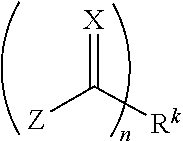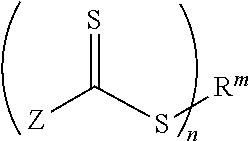Polymer powder for producing three-dimensional objects
a technology of polymer powder and three-dimensional objects, which is applied in the direction of additive manufacturing with solids, electric/magnetic/electromagnetic heating, and additive manufacturing processes. it can solve the problems of displaced or even completely broken protruding regions, the construction chamber must be maintained, and the cooling process requires a large amount of tim
- Summary
- Abstract
- Description
- Claims
- Application Information
AI Technical Summary
Benefits of technology
Problems solved by technology
Method used
Image
Examples
Embodiment Construction
[0065]m-Xylylenebismaleimide (1.0 equivalent in relation to furfuryl groups), 6 parts by weight of tetrahydrofuran and one part by weight of ZnCl2 are admixed with 60 parts by weight of precursor 1 and stirred at 50° C. for 2 hours. The sample is then poured into an aluminum dish and dried (overnight) at 50° C. in a vacuum oven. The resultant solid is then browned to the desired grain size and optionally sieved.
[0066]This powder can be used according to the description in a laser-sintering 3D-printing machine.
PUM
| Property | Measurement | Unit |
|---|---|---|
| Fraction | aaaaa | aaaaa |
| Percent by mass | aaaaa | aaaaa |
| Temperature | aaaaa | aaaaa |
Abstract
Description
Claims
Application Information
 Login to View More
Login to View More - R&D
- Intellectual Property
- Life Sciences
- Materials
- Tech Scout
- Unparalleled Data Quality
- Higher Quality Content
- 60% Fewer Hallucinations
Browse by: Latest US Patents, China's latest patents, Technical Efficacy Thesaurus, Application Domain, Technology Topic, Popular Technical Reports.
© 2025 PatSnap. All rights reserved.Legal|Privacy policy|Modern Slavery Act Transparency Statement|Sitemap|About US| Contact US: help@patsnap.com



